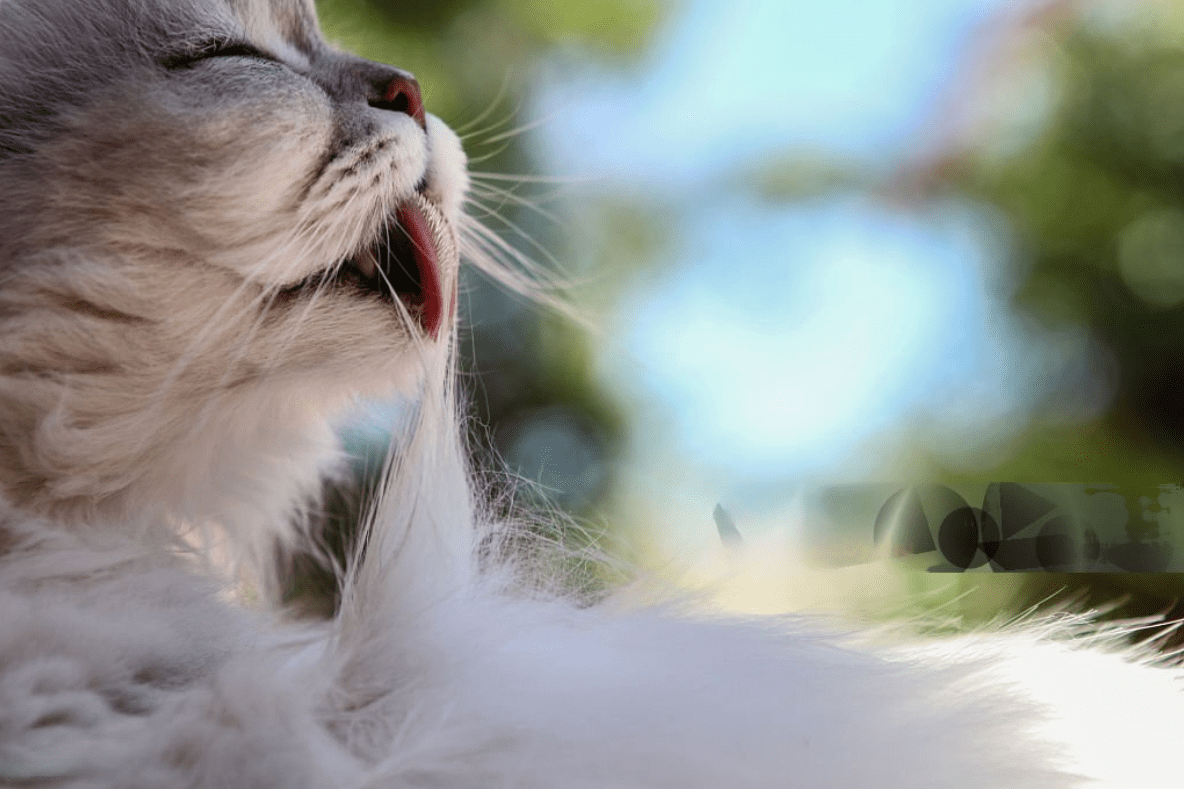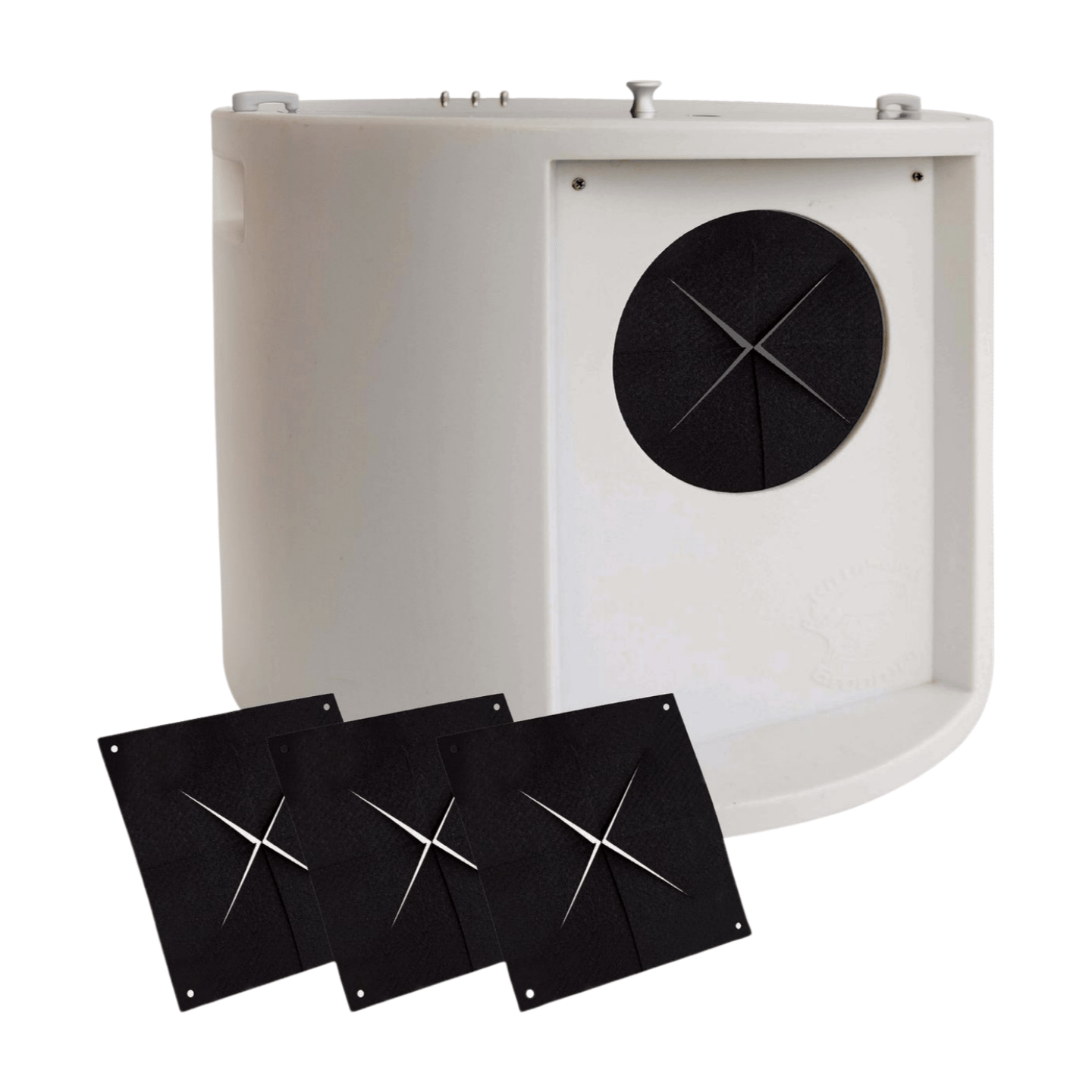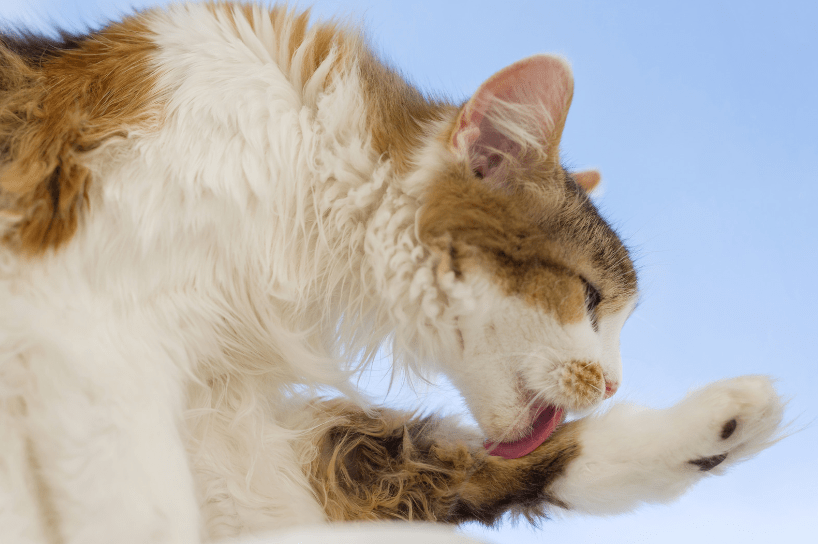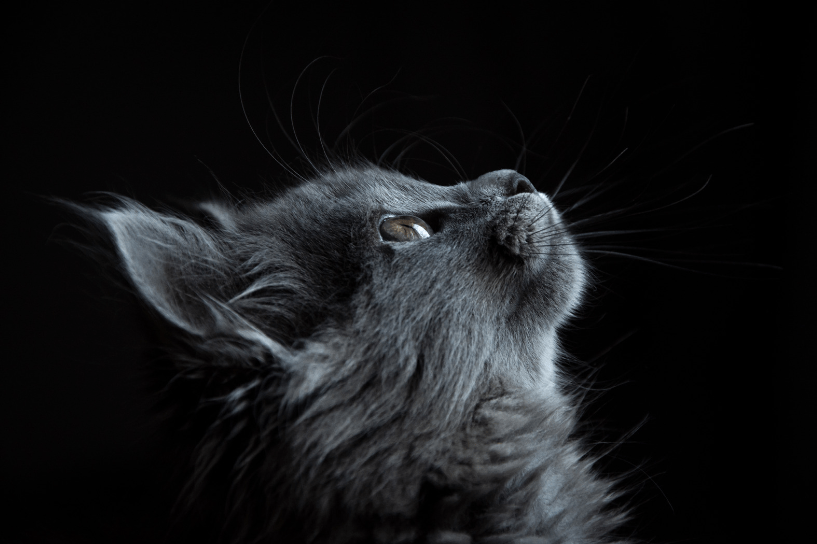
Blog
- Home
- Post: How to Encourage a Cat to Groom Itself?

To encourage a cat to groom itself, provide regular grooming sessions and use cat-friendly grooming tools. In addition, create a calm and comfortable environment for grooming.
Encourage your cat to groom itself with these helpful tips, promoting good hygiene and overall well-being. By providing a clean and calm environment, offering grooming tools and treats, and utilizing positive reinforcement, you can help your feline friend develop healthy self-grooming habits.
Understanding the Importance of Self-Grooming in Cats When it comes to grooming, cats are known for their meticulous habits. Self-grooming is an essential aspect of their daily routine and plays a crucial role in their overall well-being. Understanding the importance of self-grooming in cats can help you encourage and support this natural behavior in your feline friend. In this section, we will explore the benefits of self-grooming and common reasons why cats may stop grooming. Benefits of Self Grooming, Self-grooming offers numerous benefits for cats, both physically and mentally.
Common Reasons for Cats to Stop Grooming While self-grooming is instinctual for cats, there may be instances when they stop or reduce the frequency of this behavior. It is important to understand the reasons behind these changes and take appropriate action.
Understanding the significance of self-grooming in cats allows us to appreciate the role it plays in their overall health and well-being. By encouraging and supporting this natural behavior, we can help our feline companions lead happy and healthy lives.
If you want to encourage your cat to groom itself, creating a comfortable grooming environment is key. By providing a clean and safe space, choosing the right grooming tools, and establishing a routine, you can ensure that your cat feels relaxed and at ease during their grooming sessions.
When it comes to grooming, cats prefer a clean and safe environment. To create such a space, make sure your grooming area is free from clutter and distractions. Find a quiet room where your cat feels comfortable and secure. This will help them stay focused and relaxed during the grooming process. Keep the grooming area clean by regularly vacuuming or sweeping up any loose fur or debris. This will prevent your cat from ingesting hairballs and keep their coat healthy. Additionally, ensure that the grooming area is free from any harmful substances or objects that could pose a danger to your cat.
Choosing the right grooming tools is essential to creating a comfortable grooming experience for your cat. Opt for brushes or combs that are specifically designed for your cat’s coat type. Long-haired cats may require a brush with wide-spaced bristles to prevent matting, while short-haired cats may benefit from a rubber grooming mitt or a fine-toothed comb. Introduce grooming tools gradually and provide positive reinforcement throughout the process. Start with short grooming sessions and gradually increase the duration as your cat becomes more comfortable. Remember to be patient and gentle, as rough handling can cause your cat to feel anxious or stressed. 
To encourage your cat to groom itself regularly, establish a grooming routine. Cats thrive on routine and predictability, so try to schedule grooming sessions at the same time each day or week. This will help your cat anticipate and prepare for their grooming sessions, leading to a more cooperative and enjoyable experience. During the grooming session, speak to your cat in a calm and soothing voice. Offer treats or rewards as positive reinforcement to create positive associations with grooming. By creating a consistent routine and rewarding your cat’s cooperation, you can make grooming a pleasant bonding experience for both of you.
Encourage your cat to groom itself effortlessly by building trust and positive associations. Help your feline friend develop good grooming habits through interactive play, providing a relaxed environment, and using positive reinforcement techniques.
Grooming is an essential part of a cat’s care routine, helping to keep their fur clean, soft, and free of tangles. However, some cats may be resistant to grooming or find it stressful. To ensure a positive grooming experience for your feline friend, it’s crucial to build trust and create positive associations with the grooming process. By introducing grooming gradually and using positive reinforcement techniques, you can help your cat develop a love for self-grooming.
When it comes to introducing grooming to your cat, taking it slow is key. Abruptly attempting to groom your cat may result in fear and resistance. Instead, start by familiarizing your cat with the grooming tools and creating a calm environment. Here’s how:
Positive reinforcement is a powerful tool in building trust and encouraging your cat to groom itself willingly. By rewarding your cat for their cooperation and creating positive associations with grooming, you can make the experience more enjoyable for them. Here are some techniques to try:
Remember, building trust and positive associations with grooming takes time and patience. Each cat is unique, so it’s essential to tailor your approach to your cat’s individual needs and preferences. By introducing grooming gradually and using positive reinforcement techniques, you can transform grooming into a bonding experience and ensure your cat’s well-being.
Keeping Your Cat’s Coat Clean and Free from Matting One of the essential aspects of cat care is maintaining a clean and mat-free coat. Regular grooming not only keeps your cat looking fresh and tidy but also promotes good health and hygiene. In this section, we will explore different brushing and combing techniques as well as ways to prevent hairballs.
Brushing and combing your cat’s fur helps to remove loose hair, reduce shedding, and prevent matting. It is also an opportunity to bond with your feline companion. However, each cat requires a unique approach based on their coat type and individual preferences. To determine the ideal brushing and combing routine for your cat, consider the following factors:
Remember, each cat is unique, so be patient and observant. Experiment with different tools and techniques until you find what works best for your furry friend.
Hairballs are an unpleasant side effect of cats grooming themselves. When cats lick their fur, they may ingest some of it, which can accumulate in their digestive system and form hairballs. While occasional hairballs are normal, excessive formation can lead to discomfort and health issues. Here are a few strategies to help your cat deal with hairballs:
By implementing these strategies, you can minimize the occurrence of hairballs and ensure your cat’s digestive system stays healthy and hair-free.
When it comes to our feline friends, maintaining healthy skin is essential for their overall well-being. Cats, known for their fastidious grooming habits, usually take care of their fur. However, sometimes they might require a little extra assistance to prevent dryness and maintain optimal skin health. In this article, we will explore two key strategies to encourage your cat to groom itself effectively: using moisturizing products and identifying and treating skin issues.
Moisturizing products can play a crucial role in preventing dryness and promoting healthy skin in cats. Just like humans, cats can suffer from dry and irritated skin, which may lead to discomfort and itching. You can enhance your cat’s grooming routine by incorporating moisturizing products specifically designed for feline skin care. Here are some tips to effectively use moisturizing products:
Sometimes, despite our best efforts, our cats may face skin issues that require additional care. Identifying these issues early on is crucial to prevent them from escalating. Here are some common signs of skin issues in cats:
If you notice any of these symptoms, it’s important to consult with a veterinarian for a proper diagnosis and treatment plan. They might recommend specific grooming techniques, such as using medicated shampoos or applying topical creams. Remember, maintaining optimal skin health in your cat is essential for their overall well-being. By using moisturizing products and staying vigilant for any skin issues, you can ensure that your feline friend retains their shiny coat and remains comfortable and healthy.
Grooming is an essential part of a cat’s routine, helping to maintain their health and hygiene. While cats are generally good at grooming themselves, they may need some assistance with certain aspects, such as nail trimming. Regular nail trimming is not only important for your cat’s well-being but also helps prevent scratches on furniture and injury to you or other members of your household.
Trimming your cat’s nails regularly has several benefits. Firstly, it helps prevent the nails from becoming too long, which can be uncomfortable and lead to paw-related problems. Secondly, it minimizes the risk of your cat getting their nails caught in objects or scratching themselves unintentionally. Additionally, regular nail trimming is crucial in preventing your cat from inadvertently scratching you, other pets, or damaging your furniture.
When it comes to trimming your cat’s nails, it’s important to follow safe and effective techniques to avoid causing any harm or distress to your furry friend. Here are some simple steps to ensure a successful nail-trimming session:
Remember, if you’re unsure about trimming your cat’s nails yourself, it’s always a good idea to consult a professional groomer or veterinarian who can demonstrate the proper technique and provide guidance.
Grooming is an essential part of a cat’s daily routine, and it not only keeps their fur clean and healthy but also helps them maintain good oral hygiene. Dental care is crucial for cats as dental problems can lead to discomfort, pain, and even serious health issues. In this section, we will explore the importance of dental care for cats, as well as discuss effective methods to promote oral hygiene. By implementing these strategies, you can help your furry friend maintain a healthy and happy smile. 
Cats, just like humans, are susceptible to dental problems such as plaque buildup, tartar formation, gum inflammation, and tooth decay. Neglecting their dental care can lead to painful conditions like periodontal disease, which can affect their overall well-being. Here are some reasons why dental care is essential for cats:
Encouraging your cat to groom their teeth can be challenging, but with the right approach, you can make it a positive and enjoyable experience. Here are some effective methods to promote oral hygiene in cats:
By implementing these methods and consistently monitoring your cat’s oral health, you can ensure that they have strong teeth, healthy gums, and fresh breath. Remember, patience and positive reinforcement are essential when encouraging your cat to embrace dental care. Making oral hygiene a part of their routine is a valuable investment in their overall well-being.
Encouraging cats to groom themselves is crucial for keeping their ears and eyes clean. By providing them with interactive toys and regular brushing sessions, you can help stimulate their natural grooming instincts and ensure their overall hygiene.
It is important to keep your cat’s ears clean to prevent any possible infections or discomfort. Cats have delicate ears that require gentle care. There are proper techniques you can follow to ensure you clean your cat’s ears effectively and safely. Here is a step-by-step guide for cleaning your cat’s ears:
Keeping your cat’s eyes clean is essential for their overall well-being and preventing eye infections. Cats often groom themselves, but there are instances when they may need some extra help to maintain optimal eye hygiene. Here are some ways to safely clean your cat’s eyes:
Skin allergies are quite common among cats, and they can cause discomfort and itching. As a responsible cat owner, it’s important to identify and manage these allergies to ensure your feline friend has a healthy and happy life. By understanding the triggers, implementing effective management techniques, and providing the necessary treatment, you can help your cat reduce itching and improve overall well-being. In this article, we will explore how to identify allergies in cats and discuss various strategies for managing and treating itchy skin.
Identifying allergies in cats can be a challenging task as the symptoms may vary from one feline to another. However, some common signs can indicate the presence of an allergy. These include:
If you notice any of these symptoms in your cat, it’s essential to consult a veterinarian for a proper diagnosis. The vet will perform tests and examine your cat to determine the specific allergens causing the skin issues.
Once you have identified the allergens causing skin allergies in your cat, it’s crucial to implement effective management techniques and suitable treatment options. Here are some strategies to consider:
Identify the specific allergens that trigger your cat’s reactions and try to minimize its exposure to them. Common allergens include certain foods, pollen, dust mites, or fleas. Keep your cat indoors during peak allergy seasons, clean their bedding regularly, and vacuum your house frequently to minimize the presence of potential irritants.
Feeding your cat with a balanced and high-quality diet can help strengthen its immune system and promote healthy skin. Consult your veterinarian to determine the best diet for your cat’s specific allergies. Introduce hypoallergenic food options that eliminate potential triggers and monitor your cat’s response for any improvements.
Regular grooming sessions can help remove allergens present in your cat’s fur and reduce itching. Brushing your cat’s coat not only eliminates loose hair but also stimulates natural oil production, which helps in maintaining healthy skin. Use a soft-bristle brush or a grooming glove to make this experience enjoyable for your feline companion.
Consult your veterinarian about suitable topical treatments or medicated shampoos to alleviate itching and soothe your cat’s skin. These products often contain ingredients like oatmeal or hydrocortisone, which have anti-inflammatory properties and can provide relief to your cat.
In severe cases where the itching persists or causes significant discomfort, your veterinarian may prescribe medications like antihistamines or corticosteroids to manage your cat’s allergies and reduce itching. It’s essential to follow the prescribed dosage and schedule, as prolonged use of certain medications can have adverse effects on your cat’s health. By implementing these strategies, you can effectively handle skin allergies and reduce itching in your cat. Remember, regular veterinary check-ups and open communication with your vet are crucial for the ongoing management of your cat’s allergies. Always prioritize your cat’s well-being, and with the right care and treatment, your furry friend can enjoy a comfortable and itch-free life.
While grooming your cat at home can be a wonderful bonding experience, there are times when seeking professional grooming assistance becomes necessary. Not every cat will require professional grooming, but understanding the signs that indicate when it’s time to bring in the experts is essential. Knowing when to seek professional help will ensure that your cat receives the care it needs to maintain optimal health and well-being.
If you notice any of the following signs, it may be time to consider professional grooming for your cat:
When it comes to selecting a professional groomer for your cat, it’s essential to do your research and choose a reputable and experienced groomer. Here are a few factors to consider:
Remember, grooming is an essential part of your cat’s overall well-being. By recognizing the signs that your cat needs professional grooming assistance and choosing a reputable groomer, you can ensure that your feline companion receives the expert care it deserves.
Encouraging a cat to groom itself is essential for its overall health and well-being. By following the tips mentioned you can create an environment that promotes self-grooming in your feline friend. From regular brushing to providing appropriate grooming tools and ensuring a stress-free environment, your cat will enjoy looking after its fur.
Remember, patience and consistency are key in helping your cat develop good grooming habits. Take a proactive approach to maintaining your cat’s hygiene and be rewarded with a happier and healthier pet. Total words: 70



Must Love Cats Rescue is a nonprofit organization…
Yes, a Serval cat is capable of killing…
Cats contract the Feline Immunodeficiency Virus (FIV), also…


